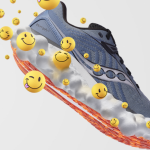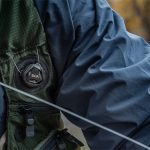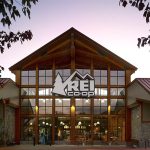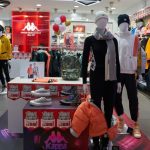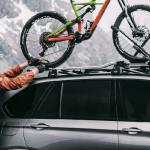Chain store sales were down 5.1 percent for the 2002/03 winter sports season (August through March) compared to the same period in 2002. In dollars, that translates to $487.6 million in sales compared to $513.7 million in 2002. The unit sales tracked 10.5 percent behind last year. Sales for the month of March in chain stores were down just slightly (-0.5 percent) from 2002 recording $48.2 million in sales compared to $48.5 million. According to Jim Spring of Leisure Trends Group, “Chain stores moved the needle downward for the second straight season. Part of the reason was slower than normal sales in the Western half of the country.”
All equipment (alpine, snowboard and Nordic) for chain stores was up 10.7 percent to $148 million from $134 million in 2002. Alpine equipment (skis, boots, bindings and poles) was up 12.9 percent to $74 million as compared to $66 million last year. Snowboard equipment (boards, boots and bindings) was a bright spot at chain stores; it was up 14.4 percent to $66 million in sales. Sales for snowboard equipment in 2002 tracked at $58 million. Nordic equipment (skis, boots, bindings and poles) was down 25.0 percent to $8 million.
Both apparel and accessories were down in chain stores. Apparel was down 10.0 percent to $190 million as compared to $211 million last season while accessories declined 11.4 percent to $149 million as compared to 2002, which was $169 million.
Snowboard Equipment Sales Stay Strong
Alpine ski sales declined 5.3 percent in dollars to $26 million while units dropped 22.5 percent, excluding ski/binding systems. Carry-over (closeouts) skis dropped 57 percent in unit sales.
Even with advances in alpine ski technology and the increase in the average retail price from $152 in 2002 to $186, alpine ski sales have not increased. Alpine ski binding systems gained some traction at the end of the season with an average retail price of $427. Almost 15,000 were sold which is an increase of 449 percent over last season. Carve ski sales dropped 75.3 percent in dollars to $1.1 million. However, other specific categories are doing well. Midfat skis (up 28.1 percent to $14.6 million), fat skis (up 178.7 percent to $880,990), twin tip skis (up 180.1 percent to $725,148), ski boards (up 55.5 percent to $1.2 million) and junior skis (up 56.5 percent to $1.6 million) all saw double digit gains or more in dollars.
The alpine equipment sales were driven by boots, which increased 23.7 percent in dollars to $27 million at pretty much the same average retail price of $157 compared to $156 in 2002. All alpine boot categories saw increases in dollars over last season. High performance (up 56.9 percent to $5.7 million), sport performance (up 30.4 percent to $7.5 million), recreation (up 95.1 percent to $6.3 million), soft boots (up 215 percent to $1.5 million) and juniors (up 95.0 percent to $1.5 million) all grew. The increase in dollars could be attributed to the lack of carry-over sales this season (down 40.2 percent in dollars).
Bindings are tracking similar to skis. Units are down 16.7 percent while dollars were down 11.3 percent to $10 million. Junior bindings are a hot product increasing 60.4 percent in dollars to $877,479. The only other category to see gains was DIN 12-14, increasing 15.6 percent to $2.3 million. DIN 1-7 and DIN 8-11 declined 39.1 percent and 5.9 percent in dollars, respectively. Poles were up (32.5 percent) to $4.5 million.
Snowboards ended the season up 1.3 percent in units and 9.1 percent in dollars to $27.9 million. The two largest categories in terms of unit sales both saw significant gains in dollar sales this year as well. Freeride and all-mountain snowboards gained 38.7 percent to $8.4 million and 280.2 percent in dollars to $7.6 million, respectively. Snowboard boots and bindings followed suit. Boots advanced 16.1 percent in dollars to $21.2 million while bindings tracked ahead 22.0 percent in dollars to $17.0 million. Non step-in boots and bindings saw all the action, gaining 53.1 percent and 72.7 percent in dollars, respectively. As a result of increased sales, there is a lack of carry-over sales in boards (down 47.9 percent), boots (down 26.6 percent) and bindings (down 45.5 percent).
Junior Apparel is Hot in Chains
Apparel tops declined 8.8 percent in dollars to $112 million; however, units gained 2.5 percent. The categories which did really well this season in chains were juniors, softshell and carry-over. Both junior insulated parkas and shell parkas gained in dollars, increasing 13.7 percent to $5.9 million and 52.0 percent to $2.4 million, respectively. Soft shell parkas advanced 59.7 percent in dollars with an average retail price of $179. It was men that were buying softshell jackets (representing 91 percent of all sold). Carry-over apparel tops sold really well in chain stores, up 74.2 percent in dollars to $16.6 million. Vests (down 30.3 percent in dollars), fleece (down 13.2 percent in dollars), and sweaters (down 25.1 percent) all saw double digit declines.
Like tops, bottoms declined 7.7 percent in dollars to $41.4 million. Carry-over accounted for over 50 percent of all alpine bottom sales ($14.1 million) which was the only category to see increases in dollars besides soft shell waist pants which grew 34.4 percent in dollars to $198,586.
The opposite was true in the snowboard apparel; lack of carry-over hurt this category. Snowboard apparel was down 13.8 percent in dollars to $34.5 million. Snowboard tops were slightly up (1.2 percent in dollars to $17.2 million) while snowboard bottoms were down (5.2 percent in dollars to $13.3 million).
Snowdecks/Skates Were a Hot Seller in Chains
The accessories business remained in the doldrums all season and ended the season down. Equipment accessories were down 7.0 percent to $61.3 million. The hottest seller in chain stores this season has been the snowdecks/skate, gaining 71.5 percent in dollars to $1.1 million and 141.4 percent in units. The only other category to see any growth was sunglasses, up 36.8 percent in dollars to $13.7 million, however; the average price dropped from $42 to $31 this season. Apparel accessories had a tough time of it also. This category was down even more at 14.3 percent to $88 million. No apparel accessory classes advanced.
The SnowSports Industries America (SIA) Retail Audit tracks and reports sales in all snow sports product categories. SIA is the not-for-profit industry trade group that represents manufacturers and distributors of snow sports products. This is the final report of six that looked at sales through March 31, 2003, the end of the winter season.




